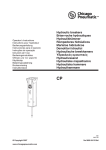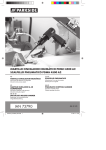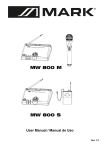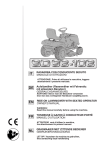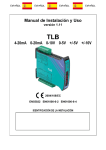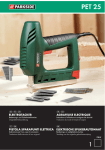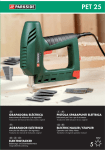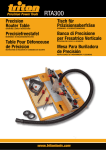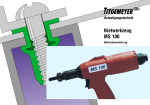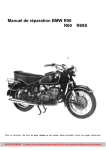Download Scarica Manuale d`Uso e Manutenzione
Transcript
M A N U A L E D I U S O E M A N U TEN Z IO N E O P ER A TIN G A N D M A IN TEN A N C E M A N U A L M A N U E L D 'U S A G E E T D E E N T R E T I E N E B ED IEN U N G S A N L EITU N G U N D W A R TU N G M A N U A L D E E M P L E O Y M A N U TE N C IÓ N De m o te r S65 S85 S1 3 0 S1 7 0 S 230 S 330 D e m o te r s .r .l. Via Ferrero 23 10090 Cascine Vica - Rivoli (TO) - ITALY Tel.: +39 011 9575884 Fax: +39 011 9591220 www.demoter.com e-mail: [email protected] N: 45,062° E: 7,555° INDICE INDEX SOMMAIRE INHALTSVERZEICHNIS INDICE i I GB F D E 1 CERTIFICATO DI CONFORMITA’ …………………………………………………….….….…. 2 2 CARATTERISTICHE TECNICHE …………………………………………………………….….3-4 3 IDENTIFICAZIONE DELLA MACCHINA ……………………………………………….….….... 5 4 DATI TECNICI …………………………………………………………………………….….….... 6 5 MONTAGGIO E SMONTAGGIO DEL MARTELLO …………………………………….………7-9 6 TARATURA DEL MARTELLO E CARICA D’AZOTO ………………………………………..10-15 7 UTILIZZO DEL MARTELLO …………………………….…………………………….….........16-20 8 PRESCRIZIONI DI SICUREZZA ……………………………………………………..…… ….21-27 9 CONDIZIONI DI GARANZIA …………….………………….……………………...…….…….28-30 1 2 3 4 5 6 7 8 9 CONFORMITY CERTIFICATE …………………………………………………………………… 2 TECHNICAL FEATURES ………………………………………………………………….……..3-4 MACHINE IDENTIFICATION ……………………………………………………….…………… 5 TECHNICAL DATA ………………………………………………………………………………… 6 ISTALLATION AND REMOVAL OF HAMMER ……………………………..………………….7-9 SETTING THE HAMMER AND NITROGEN GAS CHARGE …..………………………….10-15 OPERATING THE HAMMER ………………………………………………………………….16-20 SAFETY PRESCRIPTION ……………………………………………………………………..21-27 WARRANTY CONDITIONS …………………………………………….………………...……28-30 1 CERTIFICAT DE CONFORMITÉ ……………………………………………….………………… 2 2 CARACTERISTIQUES TECHNIQUES ………………………………………….………..……3-4 3 IDENTIFICATION DE LA MACHINE ………………………………………………………...…… 5 4 DONNEES TECHNIQUES ……………………………………………………………………….... 6 5 MONTAGE ET DEMONTAGE DU DEMOLITEUR ...…………………………………….……7-9 6 REGLAGE DU DEMOLITEUR ET CHARGE D’AZOTE ……………………………………10-15 7 UTILISATION DU DEMOLITEUR ……………………………………………………………..16-20 8 PRESCRIPTION DE SECURITÉ ………………………………………………………….…..21-27 9 CONDITIONS DE GARANTIE …………………………………………………………………28-30 1 2 3 4 5 6 7 8 9 KONFORMITÄTSERKLÄRUNG ............................................................................................ 2 TECHNISCHE CHARAKTERISTIKEN ................................................................................3-4 TYPENSCHILD ...................................................................................................................... 5 TECHNISCHE DATEN ........................................................................................................... 6 AN- UND ABBAUEN DES HYDRAULIKHAMMERS ............................................................7-9 EICHUNG DES HYDRAULIKHAMMERS UND NACHLADEN MIT N2 GAS ..................10-15 BEDIENUNG DES HAMMERS ........................................................................................16-20 SICHERHEITSVORSCHRIFTEN .....................................................................................21-27 GARANTIEBEDINGUNGEN ............................................................................................28-30 1 2 3 4 5 6 7 8 9 CERTIFICADO DE CONFORMIDAD ..................................................................................... 2 CARACTERISTICAS TECNICAS ........................................................................................3-4 IDENTIFICACION DEL MODELO .......................................................................................... 5 DATOS TECNICOS ................................................................................................................ 6 INSTALACION Y DESMONTAMENTO DE MARTILLO ...................................................... 7-9 CALIBRADO DE MARTILLO Y CARGA DE NITROGENO ..............................................10-15 UTILIZACIÓN DE MARTILLO ..........................................................................................16-20 PRECAUCIÓNES DE SEGURIDAD .................................................................................21-27 CONDICIÓNES DE GARANTIA .......................................................................................28-30 1 2 2 CARATTERISTICHE TECNICHE TECHNICAL FEATURES CARACTERISTIQUES TECHNIQUES TECHNISCHE CHARAKTERISTIKEN CARACTERISTICAS TECNICAS CORPO MONOBLOCCO SENZA TIRANTI I La particolare costruzione monoblocco conferisce alla struttura una resistenza molto elevata agli sforzi di leveraggio durante il lavoro. Il demolitore è costruito in un pezzo solo e non ci sono tiranti. FRENO IDRAULICO PER COLPI A VUOTO Per evitare che durante il lavoro si ripercuotano sulla struttura dei colpi a vuoto è stato ideato un freno idraulico interno che riduce la potenza del 60% quando l’utensile non è appoggiato al materiale da demolire. La possibilità di staccare piccole sporgenze dalla parete con un solo colpo a tutta potenza rimane immutata. RECUPERO DI ENERGIA AD AZOTO I nostri demolitori funzionano con recupero di energia inerziale ad azoto. Il gas conferisce molta potenza alla macchina ed inoltre riduce le sollecitazioni al braccio dell’escavatore. MONOBLOC BODY WITHOUT TIE - RODS GB The special monobloc manufacture confers to the steel frame a high resistance at the efforts of leverage so frequent during work. The hammer is built from a single piece without tierods. HYDRAULIC BRAKE FOR FAILED BLOWS To avoid that working the failed blows reverberating on the structure it was conceived a special hydraulic brake that reduces the power out of 60% when the tool is not on the material to demolish. It is unchanged the possibility to pull down little protuberances from the wall with full power. N2 ENERGY RECUPERATION SYSTEM Our breakers work with inertial N2 energy recuperation system. The nitrogen gas operating system gives to the hammer a lot of power and reduces solicitations to the excavator hinged arm. F CORPS MONOBLOC SANS TIRANTS La particulière construction monobloc garantie à la structure une résistance très élevée aux efforts et contraintes durant l’utilisation intense. Le brise roche hydraulique D e m o t e r est construit d’une seule pièce et n’a pas de tirants. FREIN HYDRAULIQUE POUR LES COUPS A’ VIDE Pour éviter durant l’utilisation du marteau que les coups à vide se répercute dans la structure du marteau, nous avons réalisé un frein hydraulique interne automatique qui réduit la puissance de 60% lorsque la pointe ne s’appui pas sur un matériel solide. La possibilité de briser de petites excroissances sur les parois en un seul coup en toute puissance est maintenue. RECUPERATION D’ENERGIE AVEC L’AZOTE Les marteaux D e m o t e r fonctionnent par récupération de l’énergie par la compression de l’azote. Ce gaz confère une grande puissance et en outre réduit les sollicitations au bras de la pelle. 3 D HAMMERKÖRPER OHNE ZUGANKER der Struktur eine hohe Widerstandsfähigkeit bei Arbeiten mit Hebelwirkung. HYDRAULISCHE BREMSE FÜR LEERSCHLÄGE Um Leerschläge während der Arbeiten zu vermeiden, wurde eine interne hydraulische Bremse angebracht, mit welcher die Schlagkraft bis zu 60% verringert wird und zwar wenn das Gerät nicht am Abbruchmaterial anlehnt. Bei kleinen Abbrucharbeiten bleibt dennoch die volle Leistung erhalten. ENERGIERÜCKGEWINNUNG MIT N2 GAS Die Serie S Hämmer funktionieren mit N2 Gas-Energierückgewinnung. Das Gas überträgt dem Hammer eine erhebliche Schlagkraft die für hohe Produktivität steht und reduziert die Vibrationen am Trägergerät. E CUERPO MONOBLOQUE SIN TIRANTES La particular construcción en monobloque sin tirantes le confiere a la estructura una resistencia sumamente elevada a los esfuerzos del mecanismo de palancas que son muy frecuentes durante el trabajo. FRENO HIDRÁULICO PARA GOLPES EN VACÍO Para evitar que durante el trabajo se produzcan contragolpes en vacío sobre la estructura, ha sido ideado un freno hidráulico interior que reduce la potenzia en un 60% cuando la herramienta no está apoyada. La possibilidad de machacar pequeñas protuberancias de la pared con un solo golpe con plena potencia permanece inalterada. RECUPERACIÓN DE ENERGÍA POR NITROGENO Nuestros aparatos de demolición funcionan explotando el sistema de recuperación de energía inercial por nitrógeno. El gas le confiere una potencia considerable a la máquina y además reduce los esfuerzos en el brazo del excavator. 4 3 I GB F D E IDENTIFICAZIONE DELLA MACCHINA MACHINE IDENTIFICATION IDENTIFICATION DE LA MACHINE TYPENSCHILD IDENTIFICACIÓN DEL MODELO La matricola ed il nome del modello sono stampati sulla targhetta CE. Per qualsiasi comunicazione con la ITALPUNTE s.r.l. o officina autorizzata citare tali dati. Attenersi alle istruzioni delle etichette di sicurezza! Serial number and model name are printed on the EC plate. For any communication to ITALPUNTE s.r.l. or authorized dealer always mention these data.Follow carefully the instructions of the warning stickers! Le numéro de matricule et le nom de modèle sont imprimé sur la plaque CE. Pour tout communications avec ITALPUNTE s.r.l. ou avec des centres d’assistance autorisés citer ces données. Suivre attentivement les instructions de les avis de sécurité! Die Maschinennummer und der Name des Modells sind auf dem CE Schild angegeben. Bitte bei jeglichen Mitteilungen mit ITALPUNTE s.r.l. oder autorisierten Werkstätten die obigen Daten vollständig angeben. Berücksichten Sie bitte die Anweisungen der Sicherheitsetiketten! El número de serie y el nome del modelo están grabados en la placa CE. Por cualquiera communicacíon con ITALPUNTE s.r.l. o talleres autorizados mencionar éste datos. Atenerse a los instrucciónes de señales de aviso! 5 4 DATI TECNICI TECHNICAL DATA DONNEES TECHNIQUES TECHNISCHE DATEN DATOS TECNICOS S65 S85 S130 S170 S230 S330 Kg 65 85 130 170 230 330 l/min 10 - 25 20 - 28 27 - 35 30 - 45 35 - 55 45 - 70 bar 70 - 80 75 - 90 90 - 110 125 - 135 130 - 150 135 - 160 750-1000 700-950 650-900 600-850 600-900 Modello / Model Peso operativo Operating weight Poids Arbeitsgewicht Peso de servicio Portata d’olio richiesta Oil flow rate Débit d’huile Öldurchfluß Caudal de aceite Pressione richiesta Operating oil pressure Pression hydraulique Öldruck Presión de trabajo Colpi al minuto Blows per minute Coups par minute Schlagfrequenz Golpes para minuto Energia del colpo Blow energy Puissance de frappe Energie pro Schlag Energìa de golpe Diametro utensile Tool diameter Diamètre de la pointe Werkzeugdurchmesser Diámetro pica Peso escavatore Excavator weight Poids excavateur Trägergerät Máquina portadora Lunghezza con punta Length with tool Longueur avec outil Länge mit Meissel Longitud con pica Contropressione max. Max. counterpressure Contre-pression max. Gegendruck max. Contro-presíon max. n/min 625-1250 Kgm 16 29 37 41 65 84 Joule 155 285 360 420 640 820 mm 40 45 48 57 65 75 ton 0,7 - 1,2 1,2 - 1,8 1,8 - 2,8 2,8 - 4,5 4-5 4,5 - 7 mm 961 1117 1121 1145 1148 1158 bar 25 25 25 15 15 15 6 MONTAGGIO E SMONTAGGIO INSTALLATION AND REMOVAL MONTAGE ET DEMONTAGE AN - UND ABBAUEN INSTALACIÓN Y DESMONTAMENTO 5 I 5.1 Per effettuare il montaggio / smontaggio del demolitore sul braccio si consiglia di appoggiare la macchina il più possibile in piano. 5.2 ATTENZIONE ! Prima di azionare il martello accertarsi che il deviatore allo scarico dell’escavatore sia nella posizione ‘IMPIANTO MARTELLO’. In caso di escavatore senza deviatore utilizzare per lo scarico martello la linea dedicata. 5.1 5.3 Prima di scollegare i tubi sollevare il demolitore in posizione verticale, appoggiare la punta a terra e spegnere il motore. Azionare ripetutamente il pedale del martello per scaricare la pressione residua nel tubo della mandata. GB 5.1 In order to mount / dismount the hammer on the hinged arm it’s advisable to place the breaker on a flat surface. 5.2 WARNING ! Before operating the breaker arrange the switch on the dedicated ‘HAMMER LINE’ or in case of excavator without switch select the correct oil delivery line. 5.2 5.3 Before disconnecting hoses lift the hammer vertically, lean the chisel on the ground and turn off the engine. Now pump repeatedly the pedal of the hammer to discharge the residual pressure. F 5.1 Pour effectuer le montage / démontage du démolisseur sur le bras on conseille d’appuyer la machine la plus possible en étage. 5.2 ATTENTION ! Avant de actionner le marteau assurer que le sifflet de déviation de l’huile soit en position ‘INSTALLATION MARTEAU’. En cas de excavateur sans sifflet de déviation utiliser pour le déchargé la ligne approprié. 5.3 5.3 Avant de disjoindre les tubes soulever le marteau verticalement, appuyer la pointe sur le terre et éteindre le moteur. Avec le moteur éteint, actionner plusieurs fois le pédale pour décharger la pression restant dans le tube d’entrée huile. 7 D 5.1 Beim An- und Abbau der Hydraulikhämmer sollte die Maschine auf einen möglichst ebenen Platz gelegt werden. 5.2 ACHTUNG ! Bevor der Hammer in Betrieb gesetzt wird, ist zu prüfen, dass der Ölabzugsableiter des Baggers in der Position ’HAMMERINSTALLATION’ steht. Im Falle eines Baggers ohne Ölableiter ist für die Entladung der entsprechende Abzug zu verwenden. 5.1 5.3 Vor dem Abbau der Schläuche den Hydraulikhammer senkrecht mit dem Meißel nach vorne auf dem Boden positionieren und den Motor abstellen. Mehrfach das Hammerpedal andrücken um somit den restlichen im Schlauch befindlichen Druck abzulassen. E 5.1 Para efectuar el montaje / desmontaje de martillo se aconseja de poner la máquina el más posible en llano. 5.2 ATENCION ! Antes de accionar el martillo asegurarse que el desviator al escape por l’aceite sea en la posicion ‘INSTALACION MARTILLO’. En caso de excavadora sin desviator utilizar por el escape la linea dedicada. 5.2 5.3 Antes de desconectar los tubos levantar el martillo verticalmente, apoyar la pica en tierra y apagar el motor. Accionar repetidamente el pedal de martillo por descargar la presión residual en el tubo de envio aceite. 5.3 8 1234567891011- IN alta pressione OUT bassa pressione Innesti rapidi Tubo alta pressione Tubo bassa pressione Valvola di MAX pressione Valvola deviazione Serbatoio Pompa olio Distributore Pedale azionamento 1234567891011- IN high pressure OUT low pressure Quick joints High pressure pipe Low pressure pipe Relief valve Switch valve Hydraulic tank Oil pump Distributor Foot pedal 1234567891011- IN haut pression OUT bas pression Clabots rapide Tube haut pression Tube bas pression Soupape MAX. pression Soupape déviation Réservoir hydraulique Pompe á huile Distributeur Pédale d’actionnement 1234567891011- IN Hochdruck OUT Niederdruck Schnellkupplung Hochdruckschlauch Niederdruckschlauch Ventil MAX. Druck Ableitungsventil Hydraulikbehälter Ölpumpe Verteiler Antriebspedal 1234567891011- IN alta presión OUT baja presión Embragues rápido Tubo alta presión Tubo baja presión Válvula MAX. presión Válvula desviator Depósito aceite Pompa aceite Distribuidor Pedal accionamento 9 6 I TARATURA E CARICA DI AZOTO SETTING AND NITROGEN GAS CHARGE REGLAGE ET CHARGE D’AZOTE EICHUNG UND NACHLADEN VON N2 GAS CALIBRADO Y CARGA DE NITRÓGENO 1) Montare il demolitore sull'escavatore e dopo aver provveduto all’ingrassaggio dell’utensile azionare il martello per circa un minuto affinché il grasso si distribuisca uniformemente nella sede dell’utensile. 2) Distendere il braccio dell'escavatore per circa i 2/3 dello sbraccio massimo quindi appoggiare il demolitore a terra in verticale facendo gravare su esso il peso del braccio stesso: il valore ottimale di pressione si ha quando tale peso riesce a vincere la forza di spinta del gas e la punta rientra nel martello per alcuni centimetri fino al suo fondo corsa. 3) Se la punta rientra troppo velocemente nel martello aumentare la pressione del gas e ripetere la procedura. 4) In caso contrario scaricare a poco a poco il gas attraverso la valvola sino ad arrivare alla condizione ottimale. 5) Terminata la taratura riavvitare il tappo valvola serrandolo a 12,5 Kgm. 6) I tubi idraulici sotto pressione possono avere dei movimenti sferzanti se le viti si allentano o vengono allentate. I tubi flessibili idraulici possono effettuare un “colpo di frusta” e causare gravi lesioni. 7) Pulire sempre gli attacchi rapidi prima del montaggio o dello smontaggio. Chiudere sempre i tubi e i raccordi con i tappi terminali serrati e puliti quando si esegue lo smontaggio PROBLEMI DI AVVIAMENTO Su alcuni escavatori dotati di pompe a portata variabile con entrata in regolazione della pompa a pressioni relativamente basse è indispensabile ridurre la carica del gas rispetto al valore ottimale affinché si riduca la pressione di spunto del martello e la pompa non entri in regolazione. Con tale procedura è possibile utilizzare il demolitore su escavatori con basse portate. Il procedimento inverso (aumento della carica del gas) riduce la portata su macchine con alto flusso d'olio. La tabella seguente riporta i valori medi di riferimento per la carica di azoto. S65 15 bar S85 20 bar S130 30 bar S170 20 bar S230 25 bar S330 25 bar 10 GB 1) Install the hammer on the excavator and after tool greasing operate the hammer for about one minute to uniformly distribute the grease inside the tool cavity. 2) Lengthen excavator boom for about 2/3 of the maximum sbraccio then lean the breaker vertically on earth with the boom weight resting on it: with optimal pressure this weight wins the push of the gas and the tool for some centimeters till its stroke-end stop. 3) If the tool too quickly in the hammer increase gas pressure and repeat the procedure. 4) Otherwise discharge little by little the gas through till reaching the optimal pressure. 5) Screw N2 valve plug to 12,5 Kgm tightening torque. 6) The hydraulic hoses under pressure can have stinging movements if the screws become loose or come loose. The hydraulic hoses can make a "whiplash" and cause serious injury. 7) Always clean the couplings before mounting or dismounting. Always close the pipes and fittings with end caps tight and clean when you run the disassembly. STARTING TROUBLES It is essential decrease gas charge on some excavators with variable oil delivery pumps that regulate at relatively low pressure, to reduce starting oil pressure of the hammer and the pump doesn’t regulate . This procedure allows to use breaker on excavators with low oil delivery. Reverse procedure (increasing of N2 charge) reduce flow on carriers with high oil delivery. Tab following shows medium values for the N2 charge. S65 15 bar S85 20 bar S130 30 bar S170 20 bar S230 25 bar S330 25 bar 11 F 1) Monter le démolisseur sur l'excavateur et après d’ avoir pourvu à le graissage de la pointe, actionner le marteau pour quelque minutes pour que le gras se distribue uniformément dans le siège de l'outil. 2) Étendre le bras de l'excavateur pour environ le 2/3, appuyer le marteau à terre en verticale en faisant grever sur lui le poids du bras même. La valeur optimale de pression a lorsque tel poids réussit à vaincre la force de poussée du gaz et la pointe rentre dans le marteau pour quelques centimètres jusqu'à fond course. 3) Si la pointe rentre trop rapidement dans le marteau augmenter la pression du gaz et répéter la procédure. 4) En cas contraire décharger à peu à peu le gaz à travers la soupape jusqu'à arriver à la condition optimale. 5) Terminée le réglage revisser le bouchon de la soupape en le serrant à 12.5 Kgm. 6) Les flexibles hydrauliques sous pression peuvent avoir des mouvements piqueurs si les vis se desserrent ou se détachent. Les flexibles hydrauliques peuvent faire un "coup du lapin" et provoquer des blessures graves. 7) Toujours nettoyer les raccords avant le montage ou le démontage. Toujours fermer les tuyaux et les raccords avec embouts étanches et propres lorsque vous exécutez le démontage DES PROBLÈMES DE DÉMARRAGE Sur quelques excavateurs doués de pompes à portée variable avec entrée en régulation de la pompe à des pressions relativement basses, est indispensable réduire la charge du gaz par rapport à la valeur optimale pour qu'on réduise la pression de départ du marteau et la pompe n'entre pas en régulation. Avec telle procédure est possible utiliser le démolisseur sur des excavateurs avec des bas débit. La procédure inverse (augmentation du chargée gaz) réduit le débit sur des machines avec haut flux de huile. Le tableau report valeurs moyennes de référence pour la charge d'azote. S65 15 bar S85 20 bar S130 30 bar S170 20 bar S230 27 bar S330 25 bar 12 D 1) Bauen Sie den Hammer an zum Bagger und lassen Sie nach dem Einfetten des Meißels den Hammer für ca. eine Minute laufen, damit sich das Fett gut auf dem Meißelsitz verteilen kann. 2) Den Baggerarm um ca. 2/3 seiner max. Armlänge ausstrecken und dann den Hammer vertikal auf den Boden stellen und zwar indem das Gewicht des Armes auf den Hammer drückt: der optimale Druckwert wird erreicht, wenn dieses Gewicht die Gasschubkraft gewinnt und der Meißel einige Zentimeter in den Hammer bis auf Block zurückläuft. 3) Sollte der Meißel schlagartig in den Hammer zurücklaufen, muss der Gasdruck erhöht werden und die ganze Prozedur zu wiederholen. 4) Anderenfalls das Gas mittels des Ventils nach und nach abladen und zwar bis zur Erreichung der optimalen Konditionen. 5) Nach Abschluss der Eichung, den Ventildeckel auf 12,5 Kgm zudrehen und sichern. 6) Die Hydraulikschläuche unter Druck stechenden Bewegungen, wenn die Schrauben locker werden oder sich lösen. Die Hydraulikschläuche können ein "Schleudertrauma" zu machen und schwere Verletzungen verursachen. 7) Vor der Montage oder Demontage immer die Kupplungen zu reinigen. Schließen Sie immer die Rohre und Formstücke mit Endkappen dicht und sauber, wenn Sie die Demontage laufen ANLAUFPROBLEME Bei einigen Baggern ausgestattet mit Pumpen mit variabler Tragkraft und Pumpeneinstellung bei relativ niedrigem Druck ist es absolut notwendig die Gasladung gegenüber den optimalen Wert zu reduzieren und zwar bis sich der Losbrechdruck des Hammers verringert und die Pumpe sich nicht einstellt. Auf diese Weise kann der Hammer bei Baggern mit niedriger Tragkraft eingesetzt werden. Das umgekehrte Vorgehen (Erhöhung der Gasladung) verringert die Tragkraft bei Maschinen mit hohem Ölfluss. In der nachstehenden Tabelle finden Sie die betreffenden Mittelwerte für den Arbeitsgang Nachladen von N2 Gas. S65 15 bar S85 20 bar S130 30 bar S170 20 bar S230 25 bar S330 25 bar 13 E 1) Subir el demoledor sobre el excavador y después de haber engrasado el puntero, impulsar el martillo por algunos minutos para que el grueso se distribuya uniformemente en la sede de la herramienta. 2) Extender el brazo del excavador para mas o meno el 2/3 de la maxima abertura, apoyar el martillo en tierra en vertical haciendo cargar sobre él el peso del brazo mismo. El valor óptimo de presión se consegue cuando tal peso superara la fuerza de empuje del gas y la punta vuelve a entrar en el martillo para algunos centímetros hasta el fondo. 3) Si la punta vuelve a entrar demasiado rápidamente en el martillo aumentar la presión del gas y repetir el procedimiento. 4) En caso contrario descargar poco a poco al gas a través de la válvula hasta llegar a la condición óptima. 5) Terminado el ajuste volver a atornillar el tapón de la válvula apretándolo a 12.5 Kgm. 6) Las mangueras hidráulicas bajo presión pueden tener movimientos urticantes si los tornillos se aflojen o se aflojen. Las mangueras hidráulicas pueden hacer un "latigazo" y causar lesiones graves. 7) Siempre limpie los acoplamientos antes de montar o desmontar. Siempre cierre las tuberías y accesorios con tapas apretadas y limpias al ejecutar el desmontaje PROBLEMAS DE PUESTA EN MARCHA Sobre algunos excavadores dotados de bombas a caudal variable con entrada en reglamento de la bomba a presiones relativamente bajas, es indispensable reducir la carga del gas con relación al valor óptimo para que se reduzca la presión inicial del martillo y la bomba no entra en reglamento. Con tal procedimiento es posible utilizar el demoledor sobre excavadores con bajo valor de caudal. El procedimiento opuesto (aumento de la carga de gas) reduce la caudal sobre máquinas con alto flujo de aceite. En el cuadro inferior, valores medios de referencia para la carga de nitrógeno. S65 15 bar S85 20 bar S130 30 bar S170 20 bar S230 25 bar S330 25 bar 14 I ATTENZIONE : le indicazioni relative alla carica di azoto hanno carattere informativo in quanto tale operazione può essere effettuata solo presso un centro di assistenza autorizzato dotato di apposita attrezzatura. GB WARNING : indications about nitrogen charge are just indicative because this operation can be done only in an authorized workshop with properly equipment. F ATTENTION : les indications pour la charge d’azote ont valeur indicatif pourquoi toutes les opérations de recharge ou tarage peuvent être effectuées seulement chez un centre d’assistance avec le correct appareil. D ACHTUNG : die entsprechenden Anweisungen zum Füllen des Kolbenspeichers mit N2 Gas haben nur informativen Charakter da diese Operation nur von einer autorisierten Kundendienststelle mit eigens dazu bestimmten Werkzeugen durchgeführt werden kann. E ATENCION : los indicaciónes en relación a la carga de nitrógeno son puramente informativo porque esta operación puede ser efectuada solamente en un centro de asistencia autorizado, dotado de el appropriado aparejos. 15 7 UTILIZZO DEL MARTELLO OPERATING THE HAMMER UTILISATION DU DEMOLITEUR BEDIENUNG DES HAMMERS UTILIZACIÓN DE MARTILLO I 7.1 Avviato il motore riscaldare l’escavatore. Non utilizzare il martello a freddo. Usare il demolitore ad un corretto numero di giri. Accelerare senza motivo può causare problemi al demolitore ed aumenta il consumo di carburante. 7.2 Esercitare la spinta in linea con l’utensile tenendolo il più possibile perpendicolare rispetto all’oggetto da demolire (angolo 90°). Non usare l’utensile come leva. Lavorare cercando di evitare i colpi a vuoto. 7.3 La temperatura dell’olio nel martello non deve mai superare i 70° C. Se dovesse superare gli 80° C l’olio perderebbe le sue caratteristiche di viscosità causando problemi alle guarnizioni del martello. 7.4 7.4 Il grasso è essenziale per la durata della boccola e dell’utensile. Si raccomanda di ingrassare il tutto tramite l’apposito ingrassatore almeno ogni 4 ore di lavoro. 7.5 Per sostituire la punta fare pressione sul nottolino fermaspina. A questo punto la spina di ritenzione utensile è libera e può scivolare fuori dal martello. Ora estrarre la punta. La sostituzione dell'utensile o degli accessori mentre il motore della macchina portante è in funzione, può causare gravi lesioni personali. Ricordarsi di pulire e lubrificare i fermautensili perfettamente: ciò è particolarmente importante quando si monta un nuovo utensile. 7.5 7.6 Il demolitore idraulico e l'impianto dell'olio idraulico del mezzo portante si possono danneggiare se il demolitore idraulico si usa a temperature più alte o più basse rispetto a quelle ideali. - Avviare il demolitore solo quando l'olio idraulico ha raggiunto la corretta temperatura di esercizio. - Se la temperatura esterna è al di sotto dei – 20 ºC (-4 F), ricordarsi di riscaldare l'utensile ed il demolitore idraulico prima dell'uso. - Se la temperatura dell'olio supera + 80 ºC (+176 F), non utilizzare il demolitore idraulico in quanto la qualità dell'olio può peggiorare riducendo drasticamente la vita utile di guarnizioni e O-ring 7.7 Prima di avviare il demolitore idraulico, accertarsi che non siano presenti persone nell'area a rischio, pari ad almeno 25 metri in linea orizzontale e verticale dal demolitore idraulico. 7.8 7.8 Dirigere il demolitore idraulico con un'angolazione di 90° gradi rispetto al piano. Partire dal bordo e lavorare verso il centro. Non iniziare mai dal centro di superfici grandi. Non far funzionare mai il demolitore con i cilindri del braccio della macchina a fine corsa. Potrebbero derivarne danni alla macchina portante stessa. Non utilizzare il demolitore idraulico per una durata superiore a 15 secondi nello stesso punto. Spostare l'utensile in una nuova posizione se l'oggetto non si rompe. 7.9 I nostri demolitori idraulici possono essere utilizzati per funzionare sott'acqua 16 GB 7.1 When started the engine heat the excavator. Don’t use the hammer at cold. Working with a correct number of r.p.m. Increase the r.p.m. without reason can cause problems to the hammer and rise up fuel consumption. 7.2 Exert pressure on line with the tool working perpendicular respect to the object to demolish (angle 90°). Don’t use the tool as lever. Possibly avoid failed blows. 7.3 The temperature should be maximum 70° C. If the oil temperature becomes 80° C the performance of hammer may adversely be affected and damage the seals. 7.4 Grease is absolutely necessary for life of the bushing housing and the tool. It’s recommended to grease both at least every 4 hours of work. 7.4 7.5 To change the tool push on the tool retainer pin pawl. Now the tool retainer pin pawl is free and can get off to the hammer. Now extract the tool. The replacement of the tool or accessory while the carrier engine is running can cause serious personal injury Clean and lubricate the tool-retainers perfectly. This is especially important when mounting a new tool 7.5 7.6 The hydraulic breaker and hydraulic oil system of the carrier can be damaged if the hydraulic breaker is used at higher temperatures or more lower. - Start the breaker only when the hydraulic oil has reached the correct operating temperature. - If the outside temperature is below - 20 º C (-4 F), heat the working tool and the hydraulic breaker before use. - If the oil temperature exceeds +80 ° C (+176 F), do not use the breaker bacause the hydraulic oil quality deteriorates drastically reducing the life of gaskets and O-rings 7.7 Before starting the hydraulic breaker, make sure that there are no people in the area at risk, at least 82 feet horizontally and vertically from hydraulic breaker. 7.8 7.8 Route the hydraulic breaker with an angle of 90 degrees respect object. Starting from the edge and work toward the center. Never start the center of large surfaces. Never operate the breaker with the cylinders arm of the machine at the end of the race: it could result in damage to the Machine. Do not use the hydraulic breaker for a period of more than 15 seconds in the same point. Move the tool added to a new location if the rock is not breaks. 7.9 The DEMOTER breakers can be used for underwater 17 F 7.1 Démarre le moteur échauffer l’excavateur. N’ utilisez pas le brise roche a froid. Travailler avec le marteau avec le juste numéro de tours. Accélérer sans raison peut causer problèmes au démolisseur et augmente le consommation de carburant. 7.2 Exercer la poussé en ligne avec la pointe. Travailler perpendiculairement en respect de l’objet de démolir (coin 90°). Ne utiliser pas la pointe comme une levier. Eviter le coups à vide. 7.3 La température de l’huile du marteau, jamais doit dépasser les 70° C. A 80° C l’huile perdre ses caractéristiques de viscosité et peut causer problèmes a les joints du brise roche. 7.4 7.4 La graisse est essentielle pour la durée de la bague et de l’outil. Nous conseillons d’engraisser le tout avec le graisseur exprès au moins chaque 4 heures de travail. 7.5 Pour changer l’outil faire pression sur le cliquet d’arrêt de goupille. Maintenant la goupille de rétention de l’outil c’est livre et peut glisser hors de marteau. Le remplacement de l'outil u accessoire lorsque le moteur du véhicule est en marche peut entraîner des blessures graves. Nettoyer et lubrifier la clavette parfaitement. Ceci est particulièrement important lors du montage d'un nouvel outil. 7.5 7.6 Le brise-roche hydraulique et le système d'huile hydraulique de la machine peut être endommagé si le disjoncteur hydraulique est utilisé à des températures plus élevées ou plus inférieur. - Lancer le disjoncteur que lorsque l'huile hydraulique a atteint la température de fonctionnement correcte. - Si la température extérieure est inférieure à - 20 º C (-4 F), chauffer l'outil de travail et le brise-roche hydraulique avant utilisation. - Si la température de l'huile dépasse 80 ° C (176 F), ne pas utiliser le disjoncteur que la qualité de l'huile hydraulique se détériore en réduisant considérablement la durée de vie joints utiles et les joints toriques 7.7 Avant de commencer le brise-roche hydraulique, assurez-vous qu'il n'y a Pas personnes dans la zone à risque, au moins 25 mètres horizontalement et verticalement de marteau hydraulique. 7.8 7.8 Acheminer le brise-roche hydraulique avec un angle de 90 degrés par rapport objet. À partir du bord et le travail vers le centre. Ne jamais démarrer le centre des grandes surfaces. Ne jamais faire fonctionner le disjoncteur avec les cylindres des bras à la fin de la course. Peut entraîner des dommages a la machine. Ne pas utiliser le brise-roche hydraulique pour une période de plus de 15 secondes le même point. Déplacer l'outil ajouté à un nouvel emplacement si l'objet n'est pas écrasé. 7.9 Nos marteaux hydrauliques peuvent être utilisés pour sous-marin 18 D 7.1 Den Motor anlassen und den Bagger warmlaufen lassen. Benutzen Sie den Hammer nicht im kalten Zustand und nur bei korrekter Umdrehungszahl. Eine Beschleunigung ohne Grund kann Probleme beim Hammer sowie einen höheren Treibstoffverbrauch verursachen. 7.2 Den Druck linear zur Hammermeißel ausüben und diesen dabei so gut wie möglich senkrecht zum Demolierungsgegenstand (90° Winkel) halten. Den Meißel nicht als Hebel verwenden. Vermeiden Sie beim Arbeiten Fehlschläge. 7.3 Die Öltemperatur im Hammer darf nie mehr als 70° C betragen. Bei mehr als 80° C verliert das Öl seine Zähflüssigkeit und kann somit zu Problemen bei den Hammerdichtungen führen. 7.4 7.4 Für die Dauerhaftigkeit der Buchse und des Meißels ist das Fett grundlegend. Man empfiehlt beide Teile mit der entsprechenden Fettspritze mindestens alle 4 Arbeitsstunden einzufetten. 7.5 Um den Meißel auszutauschen muß der Sperrklinkenzapfen angedrückt werden. Somit wird der Festhaltestift freigegeben und der Meißel kann aus dem Hammer entgleiten. Jetzt den Meißel entnehmen. Der Austausch der Einsatzwerkzeug oder Zubehör während der Träger Laufendem Motor kann schwere Verletzungen verursachen Reinigen und schmieren die Werkzeug hält perfekt. Dies ist besonders wichtig bei der Montage einer neuen Einsetzwerkzeug 7.5 7.6 Der Hydraulikhammer und Hydraulikölsystem des Trägers können beschädigt werden, wenn der Hydraulikhammer bei höheren Temperaturen oder mehr verwendet niedriger. - Starten der Leistungsschalter nur dann, wenn das Hydrauliköl hat die richtige Betriebstemperatur erreicht. - Wenn die Außentemperatur unter - 20 ° C (-4 F) erhitzen, Arbeitswerkzeug und den Hydraulikhammer vor dem Gebrauch. - Wenn die Öltemperatur 80 ° C (176 F) übersteigt, verwenden Sie nicht den Schalter wie das Hydrauliköl Qualität verschlechtert sich die Lebensdauer drastisch reduziert nützliche Dichtungen und O-Ringe 7.7 Vor dem Start des Hydraulikhammers, stellen Sie sicher, dass es keine Menschen in den Risikobereich, mindestens 25 Meter horizontal und vertikal von Hydraulikhammer. 7.8 7.8 Führen Sie das Hydraulikhammer mit einem Winkel von 90 Grad in Bezug Objekt. Ausgehend von der Kante und Arbeit in Richtung Zentrum. Nie starten Zentrum von großen Flächen. Betreiben Sie den Schutzschalter mit Zylinder Arm am Ende des Rennens. Kann zu Schäden an den Träger führen Verwenden Sie nicht den Hydraulikhammer für einen Zeitraum von mehr als 15 Sekunden in der gleiche Punkt. Fahren Sie das Werkzeug an eine neue Position hinzugefügt, wenn das Objekt nicht Pausen. 7.9 Unsere Hydraulikhämmer für unter Wasser eingesetzt werden 19 E 7.1 Puesto en marcha el motor, calentar l’excavadora. Non utilizar el martillo a frio. Trabajar con el martillo con el correcto número de vueltas de motor. Acelerar sin motivo puede causar problemas de martillo y aumentar el consumo de carburante. 7.2 Ejercitar una presión en linea con la pica. Trabajar possibilmente perpendicular respecto á l’objecto de demoler (ángulo 90°). Non utilizar la pica como palanca. Tratar de evitar los golpes en vacío. 7.3 La temperatura del aceite en el martillo no debe nunca superar los 70° C. Si llega a superar los 80° C l’aceite va perder viscosidad, causando problemas a los guarniciones de el demoledor. 7.4 El graso es essencial por la duración de el casquillo y de la pica. Es importante engrasar todo cada 4 horas de trabajo. 7.4 7.5 Por el cambio de pica hacer presión sur el risorte de la varilla de retención petaca. Ahora la petaca es libre y puede salir desde el martillo. Es possible extraer la pica. La sustitución de la herramienta de inserción o accesorio mientras el motor está en marcha portador puede causar lesiones personales graves. Limpie y lubrique la petacas a la perfección. Esto es especialmente importante cuando el montaje de una nueva herramienta de inserción 7.5 7.6 El martillo hidráulico y sistema de aceite hidráulico de la compañía es pueden ser dañados si el martillo hidráulico se utiliza a temperaturas más altas o más inferior. - Arrancar el interruptor sólo cuando el aceite hidráulico haya alcanzado la temperatura de funcionamiento correcta. - Si la temperatura exterior es inferior a - 20 º C (-4 F), caliente la herramienta de trabajo y el martillo hidráulico antes de su uso. - Si la temperatura del aceite supera los 80 ° C (176 F), no utilice el interruptor como la calidad del aceite hidráulico se deteriora reducir drásticamente la vida juntas útiles y juntas tóricas 7.7 Antes de iniciar el martillo hidráulico, asegúrese de que no existen personas en la zona de riesgo, por lo menos 25 pies horizontalmente y verticalmente desde martillo hidráulico. 7.8 7.8 Ruta del martillo hidráulico con un ángulo de 90 grados con respecto objetos. A partir de la orilla y el trabajo hacia el centro. Nunca arranque la centro de superficies grandes. Nunca haga funcionar el interruptor con los cilindros armar al final de la carrera. Podría resultar en daño al transportista. No utilizar el martillo hidráulico por un período de más de 15 segundos en el mismo punto. Mueva la herramienta de creación de una nueva ubicación si el objeto no es descansos. 7.9 Nuestros martillos hidráulicos se pueden utilizar para el submarino 20 8 I PRESCRIZIONI DI SICUREZZA SAFETY PRESCRIPTIONS PRESCRIPTION DE SECURITÉ SICHERHEITSVORSCHRIFTEN PRECAUCIÓNES DE SEGURIDAD Il demolitore è conforme alle norme vigenti in materia di emissione acustica 2000/14 sulla rumorosità. Si raccomanda comunque l’utilizzo di cuffie antirumore per l’operatore e le persone nelle vicinanze. E’ inoltre obbligatorio per le persone che lavorano nelle vicinanze indossare elmetto protettivo e occhiali di protezione. Per ridurre il rischio di lesioni gravi o morte, per se stessi o altre persone, è indispensabile leggere attentamente e comprendere le istruzioni sulla sicurezza e l'uso prima di installare, utilizzare, riparare il martello, ed eseguirne la manutenzione o modificare gli accessori dello stesso. E’ altresì importante rendere visibili queste istruzioni per la sicurezza e l'uso nelle sedi di lavoro, fornirne copia agli addetti e assicurarsi che tutti le leggano prima di procedere all'uso o alla manutenzione del martello. L’uso e la manutenzione della macchina sono riservati esclusivamente a personale addestrato e qualificato a dovere: esso deve essere in grado di gestire fisicamente la massa, il peso e la potenza dell'utensile. Trasporto Il trasporto del demolitore idraulico può essere eseguito solo da personale: - autorizzato ad operare una gru o un sollevatore a forche conformemente alle direttive nazionali applicabili - consapevole delle istruzioni di sicurezza nazionali e delle istruzioni per la prevenzione degli incidenti - che abbia letto e compreso i capitoli relativi alla sicurezza e al trasporto contenuti in questo manuale. - La caduta del demolitore può causare lesioni - Collocare il demolitore idraulico in posizione sicura, in modo tale che non possa cadere e causare danni. - Per sollevarlo in modo sicuro, adattare il gancio di sollevamento come mostrato nell'immagine presente sul martello . Installazione, magazzinaggio e manutenzione L'installazione, il magazzinaggio, la manutenzione del demolitore idraulico possono essere eseguiti solo da personale: consapevole delle istruzioni di sicurezza nazionali e delle istruzioni per la prevenzione degli incidenti - e che abbia letto e compreso le Istruzioni per la sicurezza e per l'uso. Funzionamento Il funzionamento del demolitore idraulico può essere eseguito solo da operatori di mezzi portanti qualificati. Gli operatori di mezzi portanti sono qualificati se: sono stati addestrati per operare un mezzo portante conformemente alle direttive nazionali; siano consapevoli delle istruzioni di sicurezza nazionali e delle istruzioni per la prevenzione degli incidenti - e che abbiano letto e compreso le Istruzioni per la sicurezza e per l'uso. Collaudo Il collaudo del sistema idraulico va eseguito esclusivamente da tecnici qualificati ed autorizzati ad approvare tale sistema secondo le norme vigenti in materia Dispositivi di protezione personale Utilizzare sempre dispositivi di protezione approvati. Gli operatori e tutte le altre persone presenti nella zona di lavoro devono indossare i dispositivi di protezione, che comprenderanno almeno: - Elmetto protettivo - Protezione acustica - Occhiali di sicurezza resistenti agli urti con protezioni laterali - protezione delle vie respiratorie, se necessario - guanti protettivi - calzature protettive adeguate 21 Droghe, sostanze alcoliche o farmaci - AVVERTENZA Droghe, sostanze alcoliche o farmaci Droghe, sostanze alcoliche o farmaci possono compromettere la propria capacità di concentrazione, scarsa reattività e, spesso, valutazioni imprecise, possono causare gravi incidenti o morte. Non utilizzare mai la macchina qualora si sia estremamente stanchi o sotto l'effetto di droghe, sostanze alcoliche o farmaci. Persone sotto l'effetto di droghe, sostanze alcoliche o farmaci non possono utilizzare la macchina. Mezzo portante , precauzioni Prima di usare o trasportare il mezzo portante con il demolitore idraulico collegato, leggere attentamente le normative sulla sicurezza e le istruzioni sul funzionamento del demolitore idraulico. Accertarsi che il mezzo portante sia dotato di adeguate caratteristiche di protezione. Il demolitore idraulico si deve montare solo su un mezzo portante con capacità di carico sufficiente. Installazione, precauzioni Sistema idraulico - - - PERICOLO Gas compresso, pericolo di esplosione L'accumulatore è pressurizzato anche quando l'impianto idraulico è spento. Smontare l'accumulatore senza prima rilasciare il gas di azoto può causare gravi lesioni personali o morte. Riempire l'accumulatore ad alta pressione esclusivamente con azoto (N2). Solo personale autorizzato è qualificato per lavorare con l'accumulatore. AVVERTENZA Olio idraulico ad alta pressione Schizzi di olio idraulico ad alta pressione possono colpire la pelle e causare danni permanenti: Non utilizzare mai le dita per controllare le perdite di fluido idraulico. Tenere il viso lontano da possibili perdite L’olio idraulico versatosi può causare ustioni e incidenti a causa della sua scivolosità; inoltre può essere causa di danni all'ambiente. Fare attenzione ad eventuale olio versatosi e maneggiarlo come indicato nelle normative sulla sicurezza e sull'ambiente. Non smontare mai la macchina idraulica quando l'olio idraulico è bollente. Non far passare mai linee idrauliche per collegare la macchina idraulica attraverso la cabina Montaggio / Smontaggio - AVVERTENZA Parti in movimento Per l’eventuale rischio di perdita di olio e lesioni personali quali schiacciamento di mani e dita: Non controllare mai i fori e i passaggi con le mani. Eventuali movimenti del braccio verranno effettuati solo in cooperazione con il personale addetto al montaggio del demolitore idraulico. Se il demolitore idraulico è montato su un attacco a rilascio rapido, accertarsi che sia bloccato saldamente e che siano eliminati eventuali rischi di allentamento del demolitore idraulico Funzionamento, precauzioni - - PERICOLO Rischio di esplosione Qualora l'utensile di inserimento venga a contatto con sostanze o gas esplosivi vi è il rischio di esplosioni. Quando si lavora e si usano determinati materiali possono verificarsi scintille e incendi. Eventuali esplosioni causerebbero lesioni gravi o morte. Non utilizzare la macchina in ambienti esplosivi. Non utilizzare mai la macchina in prossimità di materiali, vapori e polveri infiammabili. Accertarsi che non siano presenti fonti di gas o esplosivi non rilevati. AVVERTENZA Pressione di esercizio Se si supera la pressione operativa massima per la macchina idraulica, l'accumulatore si può sovraccaricare con conseguenti danni materiali e lesioni personali: Azionare sempre la macchina idraulica alla corretta pressione di esercizio. Si veda “Dati tecnici”. AVVERTENZA Rischi correlati alla polvere e ai fumi Polvere e/o fumi generati o dispersi quando si utilizza la macchina potrebbero provocare patologie respiratorie serie e permanenti, malattie, o altre lesioni corporee. Per ridurre il rischio di esposizione a polveri e fumi, è necessario e seguire una valutazione del rischio specifica per il sito. Scegliere, sottoporre a manutenzione e sostituire gli utensili di inserimento/prodotti di consumo come indicato nelle istruzioni per l'uso e la sicurezza. La scelta errata o la mancanza di manutenzione degli utensili di inserimento/prodotti di consumo o altri accessori potrebbe provocare un aumento delle polveri o dei fumi. AVVERTENZA Scosse elettriche Il demolitore idraulico non è isolato dalla corrente elettrica. Se il demolitore idraulico dovesse venire a contatto con circuiti elettrici o altre fonti di corrente elettrica, esiste un rischio di lesioni gravi o morte. AVVERTENZA Schegge, proiettili derivanti dalla demolizione Eventuali guasti degli accessori o perfino del demolitore idraulico stesso, possono generare proiettili ad alta velocità. 22 - Inoltre, durante la demolizione, schegge o altre particelle possono trasformarsi in proiettili e causare lesioni fisiche colpendo l'operatore o altre persone. Inoltre, la rottura del materiale, degli accessori o dell'utensile di inserimento, possono generare anch’essi proiettili ad alta velocità che potrebbero provocare lesioni fisiche. Oltre a ciò, anche gli oggetti che cadono da grandi altezze possono causare lesioni fisiche. Per ridurre i rischi è necessario: Recintare l'area di lavoro. Prima di iniziare ad utilizzare il demolitore, accertarsi che non siano presenti persone nell'area di rischio, identificabile in circa 20 metri orizzontalmente e verticalmente rispetto al demolitore idraulico stesso. Spegnere immediatamente il demolitore idraulico in presenza di persone nell'area di rischio. Puntare l'utensile sulla superficie di lavoro prima dell'avvio. Non mettere mai in funzione il demolitore se l'utensile non è idoneamente bloccato nel demolitore idraulico con il suo specifico trattenitore, così come previsto dalle istruzioni di montaggio. AVVERTENZA Rischio correlato al rumore Elevati livelli di rumore possono causare una perdita dell'udito permanente e disabilitante: per ridurre i rischi ed evitare qualsiasi inutile aumento dei livelli di rumore, è obbligatorio utilizzare sempre protezioni acustiche idonee. Manutenzione, precauzioni - - AVVERTENZA Avviamento accidentale Un avviamento accidentale del demolitore idraulico può portare a lesioni gravi. Seguire le istruzioni nel manuale del mezzo portante per prevenire l'avviamento involontario del demolitore idraulico. L'installazione di un circuito di avviamento sul demolitore idraulico si deve effettuare in maniera tale da impedire avviamenti accidentali: ad esempio, il pedale sul mezzo portante, deve essere dotato di copertura di protezione. AVVERTENZA Sistema idraulico ad alta pressione Interventi di manutenzione del demolitore idraulico sotto pressione possono portare a lesioni gravi: i collegamenti, ad esempio, se non correttamente effettuati, possono allentarsi improvvisamente, così come i componenti possono spostarsi improvvisamente e l'olio idraulico può essere espulso: per evitare questo è necessario depressurizzare sempre il sistema idraulico prima di eseguire la manutenzione sul demolitore idraulico o sul mezzo. AVVERTENZA Modifica della macchina Eventuali modifiche alla macchina possono causare lesioni personali all'operatore e ad altre persone. E’ quindi fondamentale ricordarsi le seguenti regole: Non modificare mai il demolitore: i demolitori modificati non sono coperti da garanzia o responsabilità sul prodotto. Utilizzare sempre ricambi, utensili d'inserimento ed accessori originali approvati dalla Italpunte S.r.l. Sostituire immediatamente i pezzi danneggiati e gli eventuali componenti usurati. AVVERTENZA Utensile caldo ed in movimento L'utensile, durante l’utilizzo, potrebbe riscaldarsi e potrebbe affilarsi. Il contatto con esso può quindi causare ustioni e tagli. Per evitare quanto sopra è consigliato quindi: Non toccare mai l’utensile quando è caldo o tagliente. Attendere che l'utensile si sia raffreddato prima di eseguire qualsiasi intervento di manutenzione L’azionamento accidentale del martello durante la manutenzione o l’inserimento dell’utensile, può causare lesioni gravi: è quindi indispensabile scollegare l’alimentazione del martello durante le operazioni di ispezione, pulizia o rimozione dell’utensile. 23 GB The breaker is in accordance with CE regulations about noise 2000/14. Nevertheless it’s recommended to use anti-noise cap, both for the operator and the workers in the surrounding. It’s obligatory to wear helmet and plastic glasses for the workers in the surrounding. To reduce the risk of serious injury or death to themselves or others, it is essential to carefully read and understand the safety instructions and operating instructions before installing, operating, repairing the hammer, and carry out maintenance or change of accessories same. It 'also important to make visible these safety instructions and use in workplaces, provide copies to employees and make sure everyone reads before use or maintenance of the hammer. The use and maintenance of the machine are exclusively reserved to trained and qualified personnel properly: it must be able to physically handle the bulk, weight and power of the tool. The Transport The transport of hydraulic breaker can only be performed by personnel : - Authorized to operate a crane or a forklift in accordance with the applicable national directives - Aware of the safety instructions and the instructions for national accident prevention - It has read and understood the chapter on safety and the carriage contained in this manual. - The fall of the breaker can cause injury - Place the hydraulic breaker in a safe position, so that it cannot fall and cause damage. - In order to lift it safely, adjust the lifting hook as shown in the image on the hammer. Installation, maintenance and storage The installation , storage, maintenance of hydraulic breaker can only be performed by personnel : - Aware of the safety instructions and the instructions for national accident prevention - It has read and understood the safety instructions and operating instructions . Functioning The functioning of the hydraulic breaker can only be performed by qualified operators of transport carriers . The operators of transport carriers are qualified if : - They have been trained to operate half carrier in accordance with national guidelines ; - They are aware of the safety instructions and the instructions for national accident prevention - They have read and understood the safety instructions and operating instructions . Testing The testing of the hydraulic system should be performed only by qualified and authorized to approve such a system in accordance with the rules in force Personal Protection Equipment Always use approved protective equipment. Operators and all other persons in the work area must wear protective equipment, which will include at least: - Helmet - Hearing protection - Impact-resistant safety goggles with side shields - Respiratory protection, if necessary - Protective gloves - Protective footwear appropriate 24 Drugs , alcohol or drugs WARNING Drugs , alcohol or drugs Drugs , alcohol or drugs can impair your ability to concentrate , lack of responsiveness and , often , inaccurate estimates can cause serious injury or death . - Never use the machine if it has been extremely tired or under the influence of drugs, alcohol or medications. - People under the influence of drugs , alcohol or drugs cannot use the machine . The carrier , precautions Before you use or transport the carrier means connected with the hydraulic breaker , carefully read the privacy safety and operating instructions of the hydraulic breaker. Make sure that the carrier is equipped with adequate security features. The hydraulic breaker must be installed only on a carrier medium with sufficient carrying capacity . Installation, precautions Compressed gas DANGER : Danger of explosion The accumulator is pressurized even when the hydraulic system is switched off. Remove the battery without first release the nitrogen gas can cause severe personal injury or death . - Fill the high-pressure accumulator exclusively with nitrogen (N2) . - Only authorized personnel are qualified to work with accumulator . WARNING Hydraulic fluid under high pressure Sketches of hydraulic oil at high pressure can affect the skin and cause permanent damage : - Never use your fingers to check for leaks of hydraulic fluid. - Keep your face away from possible losses: hydraulic oil spillages can cause burns and accidents because of its slipperiness ; also may be due to damage environment. - Pay attention to any oil spilled and handle as shown in the regulations on safety and the environment. - Never disassemble the hydraulic machine when the hydraulic oil is hot . - Never wear hydraulic lines to connect the hydraulic machine through the cabin Assembly / Disassembly WARNING Moving parts For any risk of oil leakage and injury such as crushing of hands and fingers : - Never check for holes and passageways with his hands. - Any movement of the arm will only be made in cooperation with the personnel of the assembly hydraulic breaker . - If the hydraulic breaker is mounted on a quick-release connection , make sure it is securely locked and that they are eliminated any risk of loosening the hydraulic breaker Operation precautions DANGER Risk of explosion If the insertion tool is in contact with substances or explosive gases there is the risk of explosions . when you working and using certain materials may occur sparks and fire. Any explosion would cause injury or death. - Do not use the machine in explosive environments. - Never use the machine near materials, vapors and dust . - Make sure that there are no sources of gas or explosives undetected . WARNING Working Pressure If you exceed the maximum operating pressure for the hydraulic machine , the battery may become overcharged with consequent property damage and personal injury : - Always operate the hydraulic machine to the correct pressure. See " Technical data". WARNING Risk related to dust and fumes Dust and / or fumes generated or lost when using the machine may cause respiratory diseases and series permanent , illness, or other bodily injuries. To reduce the risk of exposure to dust and fumes , it is necessary and follow a specific risk assessment for the site. Select , maintain and replace the insertion tools / consumables as indicated in the instructions for use and safety. The wrong choice or lack of maintenance of the insertion tools / consumables or other accessories may cause an increase in dust or fumes. WARNING Electrical Shock The hydraulic breaker is not isolated from the power supply. If the hydraulic breaker should come into contact With electrical circuits, or other sources of electricity, there is a risk of serious injury or death. WARNING Splinters, bullets resulting from demolition Failures in accessories or even the hydraulic breaker itself can generate high-velocity projectiles. In addition, during the demolition , chips or other particles can become projectiles and cause injury by striking the operator or other persons. Moreover, the breaking of the material , equipment or of the insertion tool , can Generate also high-velocity projectiles that could cause injury. In addition to that , also the objects which fall from great heights can cause physical injury . To reduce the risk , you must: - Enclose the work area . - Before you start to use the breaker , make sure that there are no persons in the danger zone , identified in 25 about 20 meters horizontally and vertically with respect to the hydraulic breaker itself. - Immediately turn off the hydraulic breaker in the presence of people in the area of risk. - Aim the tool on the work surface before starting. - Never operate the breaker if the tool is not properly locked in the hydraulic breaker with its specific retainer , as required by the installation instructions. WARNING Noise hazard High levels of noise can cause permanent hearing loss and disabling: To reduce risk and avoid any unnecessary increase in noise levels, it is mandatory to always use appropriate hearing protection. Maintenance, precautions WARNING Accidental Starts An accidental start-up of the hydraulic breaker can lead to serious injury. Follow the instructions in the manual of the carrier to prevent unintended start of the hydraulic breaker. The installation of a starter circuit on the hydraulic breaker must be effected in such a manner as to prevent accidental starting, for example, the pedal on the carrier, must be equipped with protective cover. WARNING Hydraulic High Pressure Maintenance of the hydraulic breaker under pressure can lead to serious injury : the connections, to example, if not properly carried out, can loosen suddenly , as well as the components can move suddenly and the hydraulic oil may be expelled : To avoid this you must always depressurize the system Hydraulic before performing maintenance on the hydraulic breaker or the middle. WARNING Modification of the machine Any modifications to the machine may cause injury to yourself and other people. It is therefore essential remember the following rules: - Never modify the breaker : breakers changed are not covered under warranty or product liability. - Always use spare parts , tools and accessories provided by inserting approved by Italpunte Srl - Immediately replace damaged parts and any worn components . WARNING Tool warm and moving The tool , in use , it may become hot and could sharpen . The contact with it can cause burns and cuts then . To avoid the above is therefore recommended : - Never touch the tool when it is hot or sharp . - Allow the tool to cool down before performing any maintenance The accidental operation of the hammer during maintenance or that the tool can cause serious injury : is therefore essential to disconnect the power supply of the hammer during the operations of inspection, cleaning or removal tool. 26 F Le démolisseur est conforme a les normatives CE sur le bruit 2000/14. On conseille de tout e façon l’utilisation de coiffes antibruit soit pour l’opérateur et pour le personnel qui travail en proximité. C’est obligatoire de mettre le casque et les lunettes de protection pour le personnel qui travail en proximité. De plus amples informations sur les normes de sécurité sont disponibles dans les versions italienne et anglaise des pages précédentes. D Der Hydraulikhammer entspricht den EG-Richtlinien 2000/14 hinsichtlich der Akustikvorschriften. Es wird der Gebrauch von Gehörschutz für den Benützer als auch für die anderen Personen in unmittelbarer Nähe vorgeschrieben. Benutzen Sie außerdem eine Schutzbrille und den Plastikhelm. Weitere Informationen zu den Sicherheitsstandards sind in italienischer und englischer Sprachversionen der vorherigen Seiten vorhanden. E El demoledor es conforme a las normas acústicas 2000/14 por la ruidosidad. Se recomenda de utilizar protectores auriculares por l’operador y los obreros alrededor. Es también obligatorio por las personas que trabajan en proximidad de ponerse el casco y las gafas de protección. Para más información sobre las normas de seguridad están disponibles en las versiones de italiano e inglés de las páginas anteriores. 27 9 I CONDIZIONI DI GARANZIA WARRANTY CONDITIONS CONDITIONS DE GARANTIE GARANTIEBEDINGUNGEN CONDICIÓNES DE GARANTIA La ITALPUNTE s.r.l. garantisce i prodotti di sua fabbricazione per una durata di 24 mesi dalla data di consegna con un massimo di 1000 ore di lavoro (la durata di 24 mesi è riservata unicamente al mercato italiano). La garanzia non copre i particolari soggetti ad usura quali le boccole, la spina ferma utensile e l’utensile, poiché se il demolitore non viene usato correttamente oppure non si esegue la manutenzione periodica, si usurano precocemente. La garanzia non sarà accordata nei seguenti casi: - manomissione dei particolari; - applicazioni particolari non autorizzate per iscritto dal ns. ufficio tecnico; - utilizzo del prodotto non conforme alle caratteristiche di progetto; - impossibilità di comunicare il numero di matricola della macchina. La garanzia non prevede alcuna indennità o risarcimento per i trasporti o i fermi macchina. La ITALPUNTE s.r.l. fornirà la garanzia per i materiali dichiarati difettosi a proprio insindacabile giudizio. Procedura di richiesta per interventi in garanzia. Tutti i reclami in garanzia devono essere segnalati entro 8 giorni dal guasto; le indicazioni dell’inconveniente devono essere il più dettagliate possibile. L’ufficio assistenza confermerà per iscritto l’eventuale accettazione d’intervento in garanzia eseguito dal cliente o invierà un tecnico della ITALPUNTE S.r.l. I particolari da riparare dovranno essere spediti alla ITALPUNTE s.r.l. in porto franco. Se la riparazione viene eseguita dal cliente i particolari difettosi dovranno rimanere a ns. disposizione per 90 giorni; inoltre potrà essere richiesta la documentazione fotografica dell’intervento eseguito. GB ITALPUNTE s.r.l. guarantees that their products are free of defects both in material and in manufacturing. The warranty is valid for a time of 12 months from the date of delivery with a maximum of 1000 hours of work. Warranty does not cover the tool retainer pin, the tool bushing and the tool because they are wear parts. Warranty is not accepted in case of: - Improper use or negligence; - Applications not authorized in writing form by our technical office; - Particular tampering; - Incorrect use of the breaker with project design and features; - Any modifications or repairs carried out by unauthorized service personnel. Warranty does not cover any form of indemnity for transportation or machine breakdowns. ITALPUNTE s.r.l. will provide the warranty for all the defective parts at his unquestionable opinion. Procedure for warranty intervention. Warranty complaints must be reported within 8 days from the breakdown; the problems about the machine must be detailed by a written report. The customer service will confirm in writing form the acceptance of warranty claim carried out by the customer himself, or ITALPUNTE s.r.l., will send a technician to the customer. Parts to be examined must be sent to ITALPUNTE Service Department free of charge. If the repair is carried out by the customer, the defective parts must be at our disposal for 90 days. Furthermore a photographic documentation about the defective/damaged part could be 28 F ITALPUNTE garantis ces produits pour une durée de 12 mois de la date de livraison avec un maximum de 1000 heures de travail. La garantie ne couvre pas les pièces soumises à usure comme les axes, goupilles de retenue de l’outil et l’outil, étant donné que si le démolisseur n’est pas utilisé correctement, où si l’on n’effectue pas l’entretien périodique, ils s’useront précocement. La garantie ne sera pas accordée dans les cas suivants: - altération des pièces; - applications particulières non autorisées par écrit par notre bureau technique; - utilisation du produit non conforme aux caractéristiques du projet; - impossibilité de communiquer le n° de matricule de la machine. La garantie ne prévoit aucune indemnité ou dédommagement pour les transports ou arrêt de la machine. ITALPUNTE s.r.l. fournira la garantie pour les matériaux déclarés défectueux selon son jugement. Procédure de demande pour des interventions en garantie. Toutes les réclamations en garantie doivent être signalées dans les 8 jours de la panne; les indications de l’inconvénient doivent être les plus détaillées possible. Le bureau d’assistance confirmera par écrit l’éventuelle acceptation de l’intervention en garantie effectué par le client ou enverra un technicien de ITALPUNTE s.r.l. Les pièces à réparer devront être envoyées à charge du client à ITALPUNTE s.r.l. Si la réparation est effectuée par le client, les pièces défectueuses devront rester à notre disposition pour 90 jours, de plus, pourra être demandée une documentation photographique de l’intervention effectuée. D Die Fa. ITALPUNTE S.r.l. gewährt eine 12 Monate Garantie oder max 1.000 Betriebsstunden auf Material- oder Herstellungsfehler seiner Produkte. Eine korrekt ausgefüllte und eingesandte Garantiekarte sind notwendig für die Gültigkeit der Garantie. Die Garantie deckt nicht die Teile mit normaler Abnutzung wie z.B. Buchsen, Haltestift, Meißel, da diese bei nicht korrektem Einsatz oder vernachlässigter Wartung einem vorzeitigen Verschleiß unterworfen sind. Weiterhin ist die Garantie in folgenden Fällen nicht gültig: - Missbrauch/Fahrlässigkeit der Teile - Spezielle Anwendungen der Teile die nicht von unserem Technischen Büro autorisiert wurden - Unsachgemäße Verwendung des Produktes oder die nicht nach den gegebenen Anweisungen benutzt wurden - Nicht lesbare Maschinennummer - Zerlegen oder Reparaturen durch eine nicht autorisierte Person. Die Garantie ist nicht anwendbar auf Transportschäden oder Produktionsstillstände. Die Fa. ITALPUNTE S.r.l. wird die Garantie für die als defekt erklärte Materialien gemäß eigenem unanfechtbarem Urteil erteilen. Vorgangsweise bei Garantieansprüche: Sämtliche Garantieansprüche können nur dann anerkannt werden, wenn sie beim Händler innerhalb von 8 (acht) Tage ab Feststellung des Schadens gemeldet werden. Im gültigen Garantiefall wird vom Kundendienst eine Garantie auf die Reparatur ausgeschrieben, welche entweder vom Kunden selbst oder von einem ITALPUNTE-Techniker durchzuführen ist. Die zu reparierenden Teile sind an die Fa. ITALPUNTE S.r.l. frei Haus zu liefern. Wird die Reparatur vom Kunden durchgeführt, müssen uns die defekten Teile für 90 Tage zur Einsichtnahme mit entsprechender Bilddokumentation vom durchgeführten Einsatz zur Verfügung gestellt werden. 29 E Los productos ITALPUNTE s.r.l. están garantizados durante 12 meses a partir de la fecha de entrega al cliente con un maximo de 1000 horas de trabajo. La garantia no se aplica a las piezas que se pueden subir desgaste: casquillo, pica, petaca. La garantia no se aplica tambien: - a las piezas cuyo destaste tengan por causa un defecto en el mantenimento correcto como indicado en el manual de instrucciones; - martillos usados para otro trabajos que: cimentación, zanjeado, escarificación, apertura de zapatas, trocedao de bloques, trabajos de arranque o rectificación; - imposibilidad de comunicar el número de identificación del modelo; - utilizatión de repuestos non originales ITALPUNTE. La garantia no prever alguna forma de indemnización por transporte o cualquier tipo de otro daño en relacción a el utilizatión. Todos los desgaste deben ser denunciados dentro de 8 dies desde el daño; los indicaciones de el inconveniente deben ser lo mas detallados posible. ITALPUNTE s.r.l. concereré garantia por los materiales declarado defectosos a su discreción, y 30
































